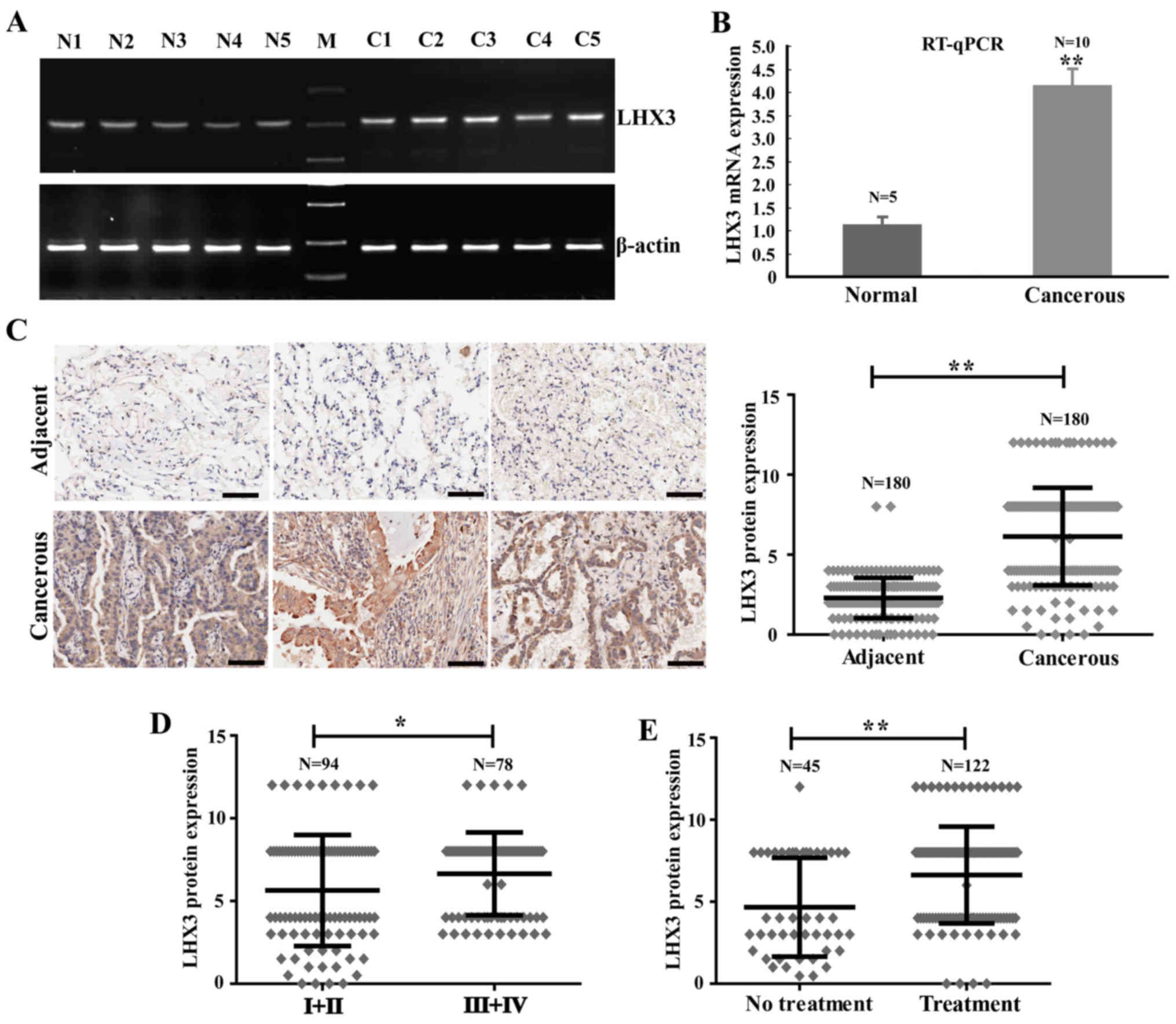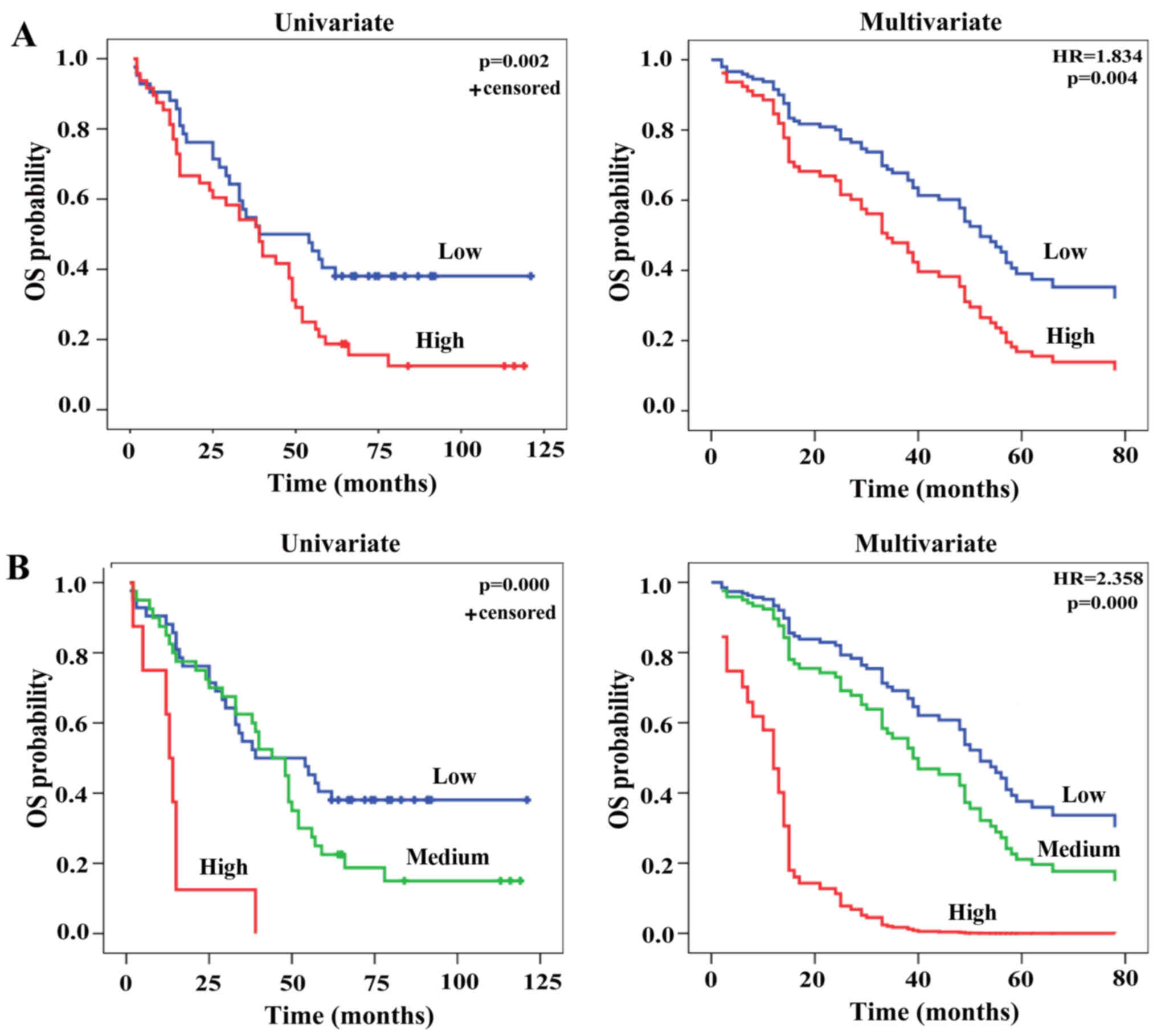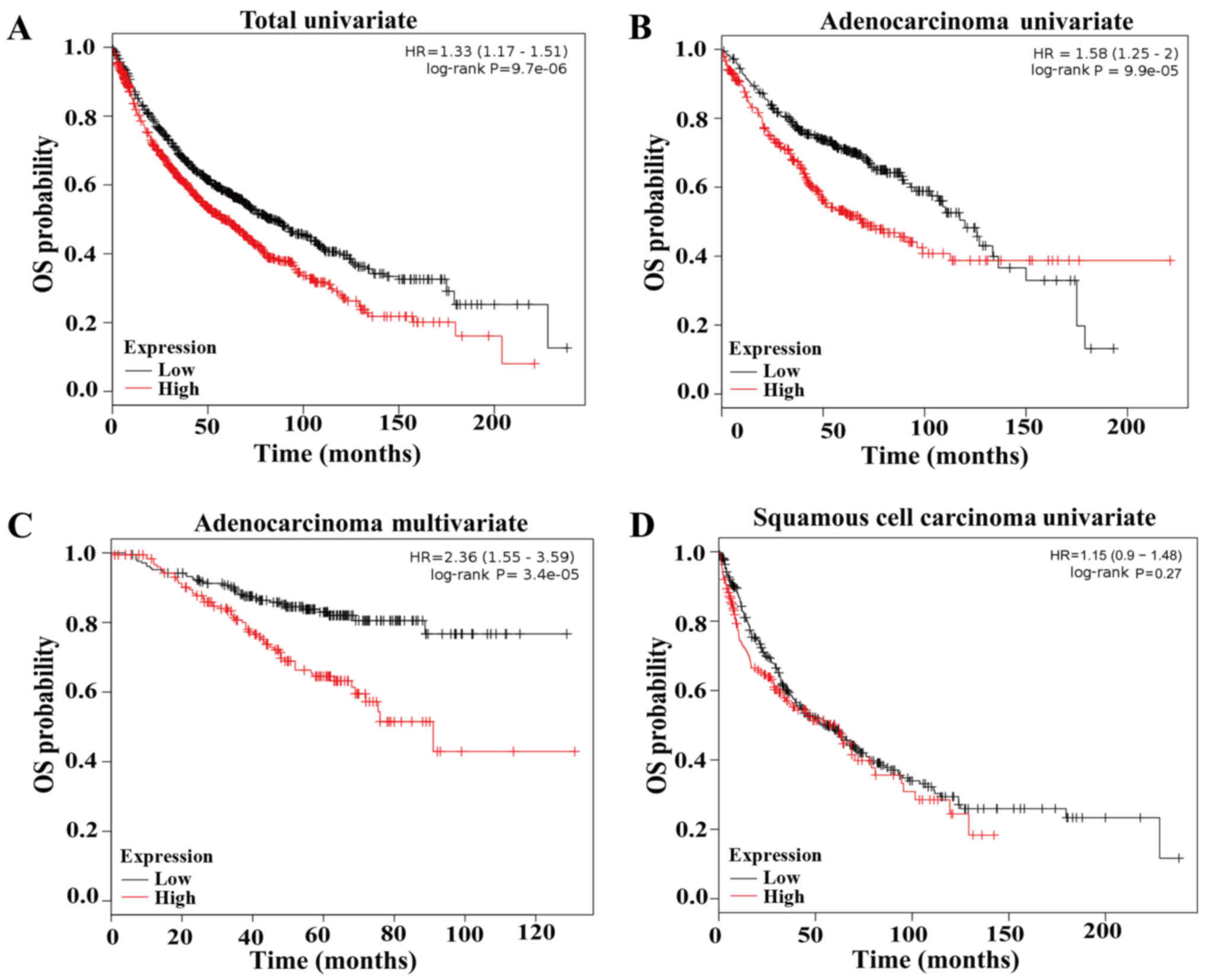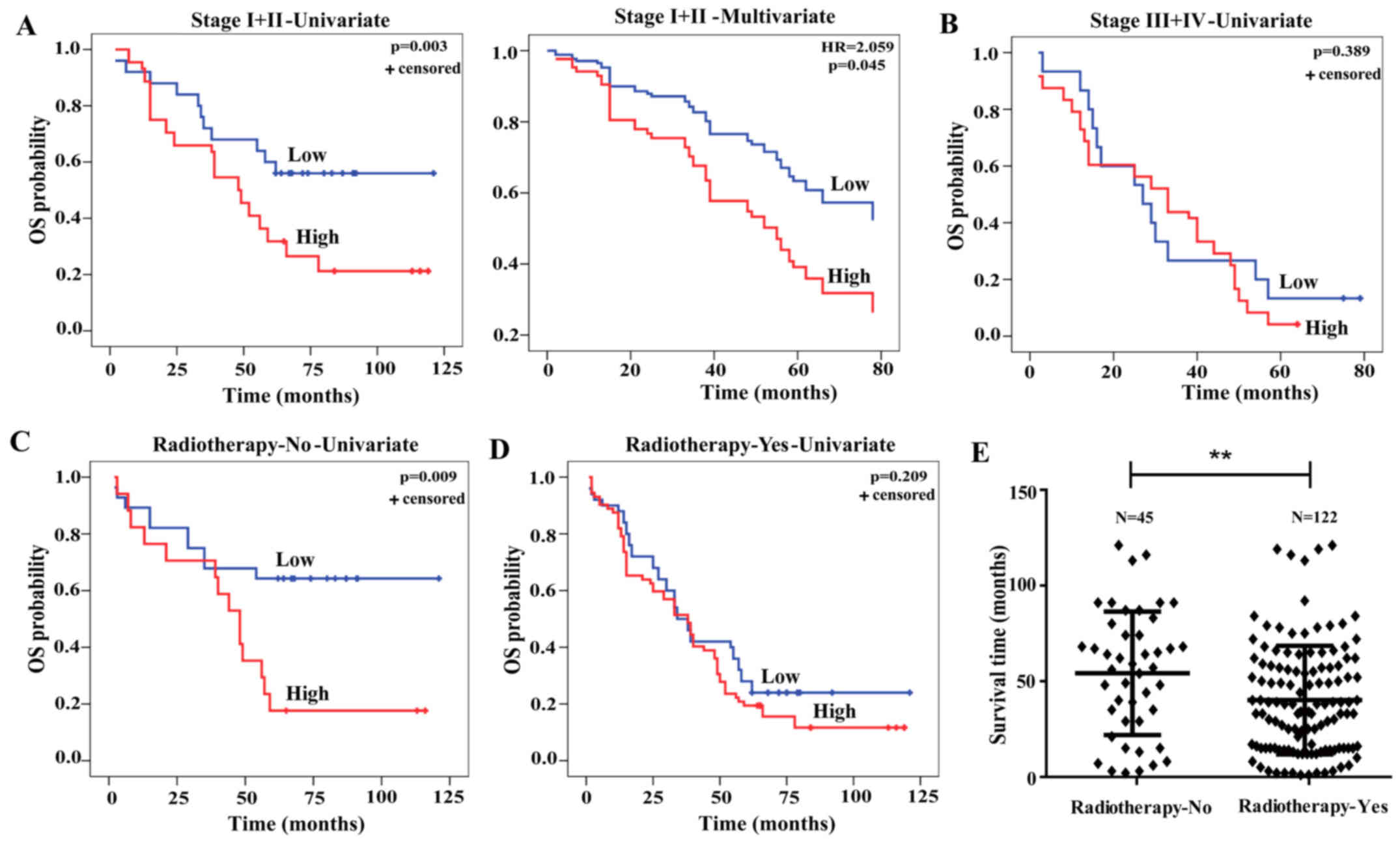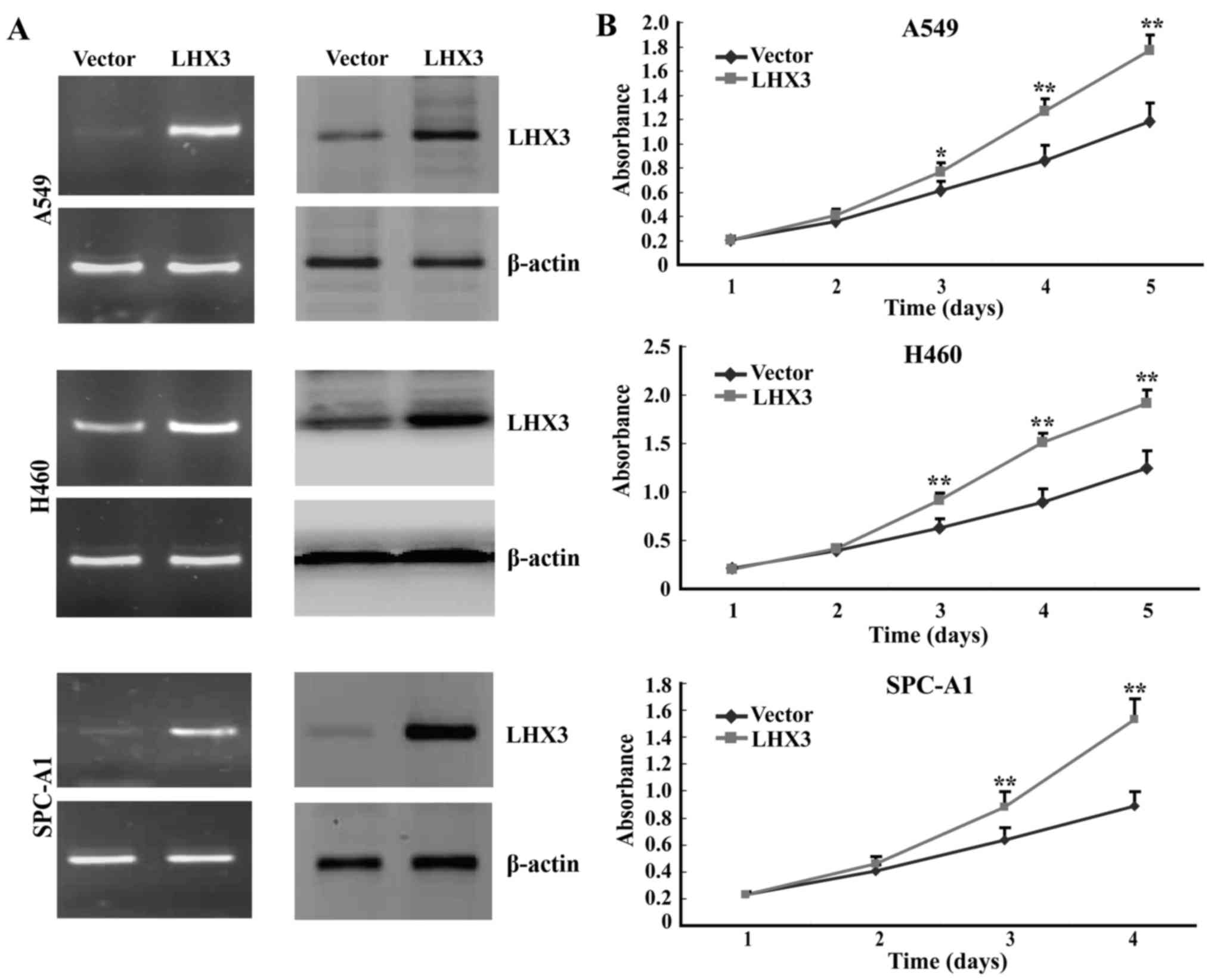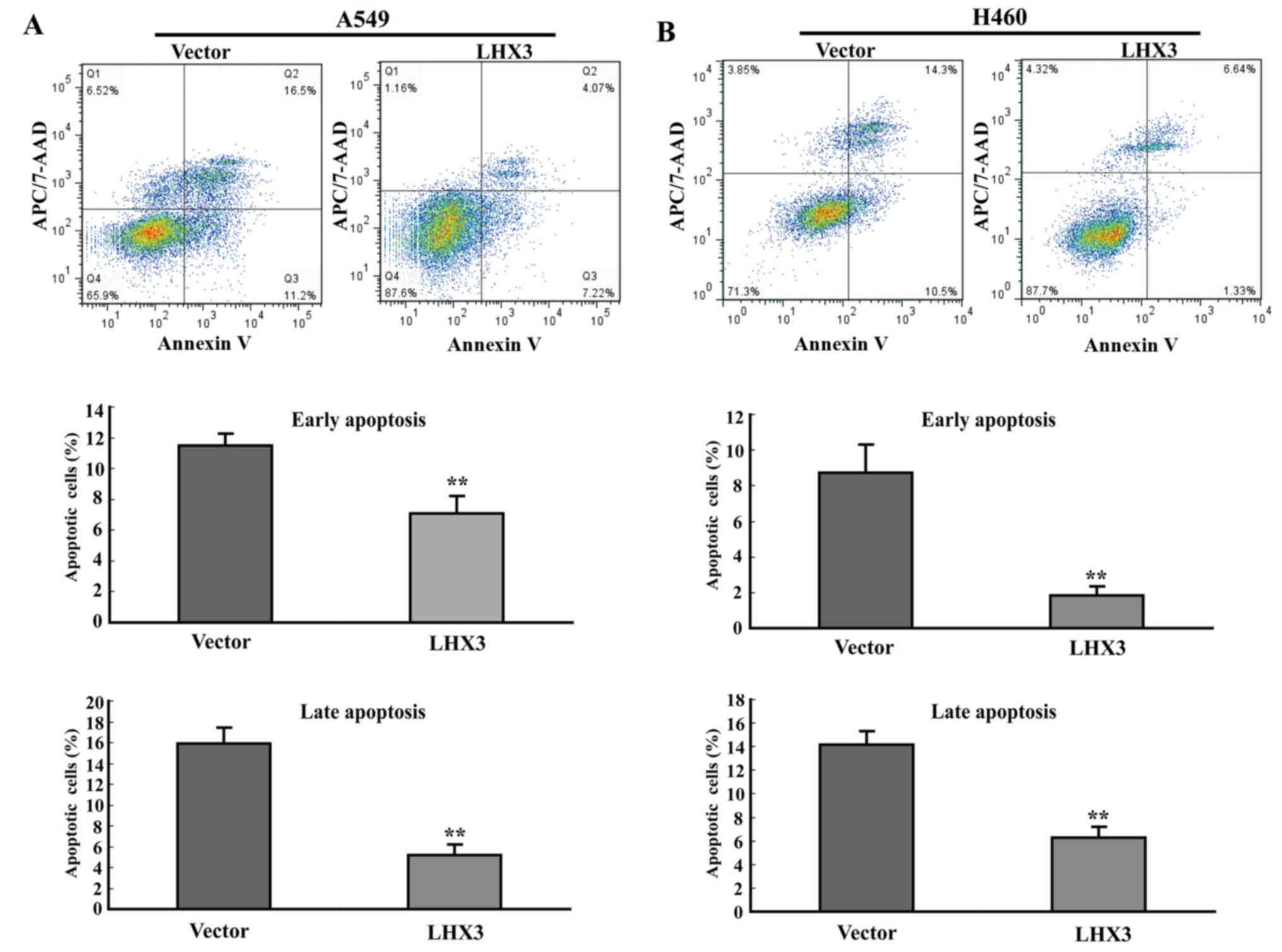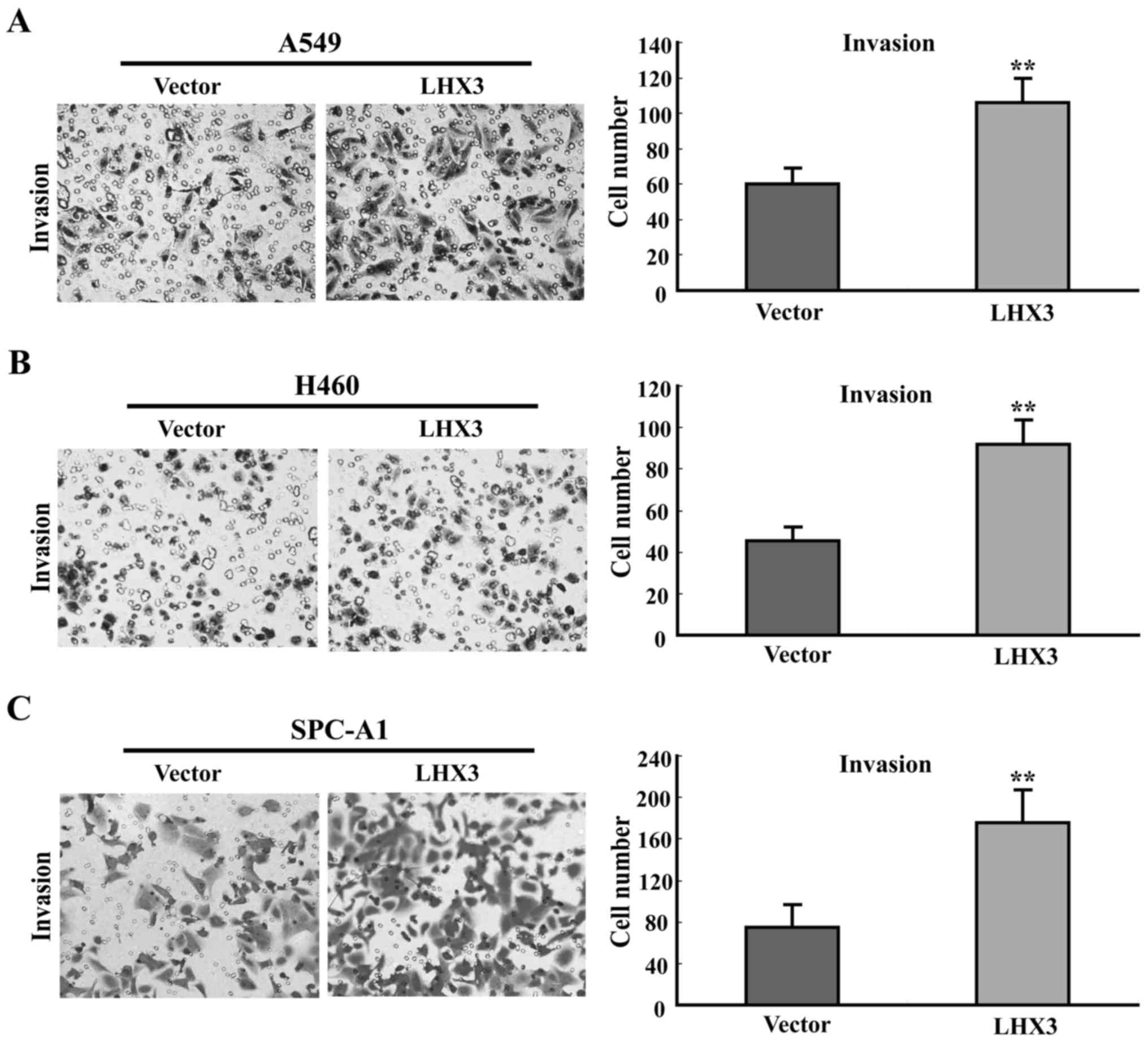|
1
|
Siegel R, Naishadham D and Jemal A: Cancer
statistics, 2012. CA Cancer J Clin. 62:10–29. 2012. View Article : Google Scholar : PubMed/NCBI
|
|
2
|
Boyle P and Ferlay J: Cancer incidence and
mortality in Europe, 2004. Ann Oncol. 16:481–488. 2005. View Article : Google Scholar : PubMed/NCBI
|
|
3
|
Ridge CA, McErlean AM and Ginsberg MS:
Epidemiology of lung cancer. Semin Intervent Radiol. 30:93–98.
2013. View Article : Google Scholar : PubMed/NCBI
|
|
4
|
Pao W and Chmielecki J: Rational,
biologically based treatment of EGFR-mutant non-small-cell lung
cancer. Nat Rev Cancer. 10:760–774. 2010. View Article : Google Scholar : PubMed/NCBI
|
|
5
|
Molina JR, Yang P, Cassivi SD, Schild SE
and Adjei AA: Non-small cell lung cancer: Epidemiology, risk
factors, treatment, and survivorship. Mayo Clin Proc. 83:584–594.
2008. View Article : Google Scholar : PubMed/NCBI
|
|
6
|
Jemal A, Siegel R, Xu J and Ward E: Cancer
statistics, 2010. CA Cancer J Clin. 60:277–300. 2010. View Article : Google Scholar : PubMed/NCBI
|
|
7
|
Chen YT, Kobayashi A, Kwan KM, Johnson RL
and Behringer RR: Gene expression profiles in developing nephrons
using Lim1 metanephric mesenchyme-specific conditional mutant mice.
BMC Nephrol. 7:12006. View Article : Google Scholar : PubMed/NCBI
|
|
8
|
Shawlot W and Behringer RR: Requirement
for Lim1 in head-organizer function. Nature. 374:425–430. 1995.
View Article : Google Scholar : PubMed/NCBI
|
|
9
|
Richter K, do Pinto OP, Hägglund AC,
Wahlin A and Carlsson L: Lhx2 expression in hematopoietic
progenitor/stem cells in vivo causes a chronic myeloproliferative
disorder and altered globin expression. Haematologica.
88:1336–1347. 2003.PubMed/NCBI
|
|
10
|
Raetzman LT, Ward R and Camper SA: Lhx4
and Prop1 are required for cell survival and expansion of the
pituitary primordia. Development. 129:4229–4239. 2002.PubMed/NCBI
|
|
11
|
Zhao Y, Sheng HZ, Amini R, Grinberg A, Lee
E, Huang S, Taira M and Westphal H: Control of hippocampal
morphogenesis and neuronal differentiation by the LIM homeobox gene
Lhx5. Science. 284:1155–1158. 1999. View Article : Google Scholar : PubMed/NCBI
|
|
12
|
Grigoriou M, Tucker AS, Sharpe PT and
Pachnis V: Expression and regulation of Lhx6 and Lhx7, a novel
subfamily of LIM homeodomain encoding genes, suggests a role in
mammalian head development. Development. 125:2063–2074.
1998.PubMed/NCBI
|
|
13
|
Dormoy V, Béraud C, Lindner V, Thomas L,
Coquard C, Barthelmebs M, Jacqmin D, Lang H and Massfelder T:
LIM-class homeobox gene Lim1, a novel oncogene in human renal cell
carcinoma. Oncogene. 30:1753–1763. 2011. View Article : Google Scholar : PubMed/NCBI
|
|
14
|
Gorantla B, Asuthkar S, Rao JS, Patel J
and Gondi CS: Suppression of the uPAR-uPA system retards
angiogenesis, invasion, and in vivo tumor development in pancreatic
cancer cells. Mol Cancer Res. 9:377–389. 2011. View Article : Google Scholar : PubMed/NCBI
|
|
15
|
Kim MS, Lee J, Oh T, Moon Y, Chang E, Seo
KS, Hoehn BD, An S and Lee JH: Genome-wide identification of OTP
gene as a novel methylation marker of breast cancer. Oncol Rep.
27:1681–1688. 2012.PubMed/NCBI
|
|
16
|
Hung TM, Hu RH, Ho CM, Chiu YL, Lee JL,
Jeng YM, Shih DT and Lee PH: Downregulation of alpha-fetoprotein
expression by LHX4: A critical role in hepatocarcinogenesis.
Carcinogenesis. 32:1815–1823. 2011. View Article : Google Scholar : PubMed/NCBI
|
|
17
|
Estécio MR, Youssef EM, Rahal P, Fukuyama
EE, Góis-Filho JF, Maniglia JV, Goloni-Bertollo EM, Issa JP and
Tajara EH: LHX6 is a sensitive methylation marker in head and neck
carcinomas. Oncogene. 25:5018–5026. 2006. View Article : Google Scholar : PubMed/NCBI
|
|
18
|
Jung S, Jeong D, Kim J, Yi L, Koo K, Lee
J, Kim CJ, Kim CH, An S, Yang Y, et al: Epigenetic regulation of
the potential tumor suppressor gene, hLHX6.1, in human cervical
cancer. Int J Oncol. 38:859–869. 2011.PubMed/NCBI
|
|
19
|
Sharma K, Sheng HZ, Lettieri K, Li H,
Karavanov A, Potter S, Westphal H and Pfaff SL: LIM homeodomain
factors Lhx3 and Lhx4 assign subtype identities for motor neurons.
Cell. 95:817–828. 1998. View Article : Google Scholar : PubMed/NCBI
|
|
20
|
Sheng HZ, Zhadanov AB, Mosinger B Jr,
Fujii T, Bertuzzi S, Grinberg A, Lee EJ, Huang SP, Mahon KA and
Westphal H: Specification of pituitary cell lineages by the LIM
homeobox gene Lhx3. Science. 272:1004–1007. 1996. View Article : Google Scholar : PubMed/NCBI
|
|
21
|
Sheng HZ, Moriyama K, Yamashita T, Li H,
Potter SS, Mahon KA and Westphal H: Multistep control of pituitary
organogenesis. Science. 278:1809–1812. 1997. View Article : Google Scholar : PubMed/NCBI
|
|
22
|
Thaler JP, Lee SK, Jurata LW, Gill GN and
Pfaff SL: LIM factor Lhx3 contributes to the specification of motor
neuron and interneuron identity through cell-type-specific
protein-protein interactions. Cell. 110:237–249. 2002. View Article : Google Scholar : PubMed/NCBI
|
|
23
|
Dietrich D, Lesche R, Tetzner R, Krispin
M, Dietrich J, Haedicke W, Schuster M and Kristiansen G: Analysis
of DNA methylation of multiple genes in microdissected cells from
formalin-fixed and paraffin-embedded tissues. J Histochem Cytochem.
57:477–489. 2009. View Article : Google Scholar : PubMed/NCBI
|
|
24
|
Gao Q, Qiu SJ, Fan J, Zhou J, Wang XY,
Xiao YS, Xu Y, Li YW and Tang ZY: Intratumoral balance of
regulatory and cytotoxic T cells is associated with prognosis of
hepatocellular carcinoma after resection. J Clin Oncol.
25:2586–2593. 2007. View Article : Google Scholar : PubMed/NCBI
|
|
25
|
Han F, Dong Y, Liu W, Ma X, Shi R, Chen H,
Cui Z, Ao L, Zhang H, Cao J, et al: Epigenetic regulation of sox30
is associated with testis development in mice. PLoS One.
9:e972032014. View Article : Google Scholar : PubMed/NCBI
|
|
26
|
Han F, Liu W, Jiang X, Shi X, Yin L, Ao L,
Cui Z, Li Y, Huang C, Cao J, et al: SOX30, a novel epigenetic
silenced tumor suppressor, promotes tumor cell apoptosis by
transcriptional activating p53 in lung cancer. Oncogene.
34:4391–4402. 2015. View Article : Google Scholar : PubMed/NCBI
|
|
27
|
Győrffy B, Surowiak P, Budczies J and
Lánczky A: Online survival analysis software to assess the
prognostic value of biomarkers using transcriptomic data in
non-small-cell lung cancer. PLoS One. 8:e822412013. View Article : Google Scholar : PubMed/NCBI
|
|
28
|
Liu WB, Jiang X, Han F, Li YH, Chen HQ,
Liu Y, Cao J and Liu JY: LHX6 acts as a novel potential tumour
suppressor with epigenetic inactivation in lung cancer. Cell Death
Dis. 4:e8822013. View Article : Google Scholar : PubMed/NCBI
|
|
29
|
Vladimirova V, Mikeska T, Waha A,
Soerensen N, Xu J, Reynolds PC and Pietsch T: Aberrant methylation
and reduced expression of LHX9 in malignant gliomas of childhood.
Neoplasia. 11:700–711. 2009. View Article : Google Scholar : PubMed/NCBI
|
|
30
|
Thu KL, Becker-Santos DD, Radulovich N,
Pikor LA, Lam WL and Tsao MS: SOX15 and other SOX family members
are important mediators of tumorigenesis in multiple cancer types.
Oncoscience. 1:326–335. 2014. View Article : Google Scholar : PubMed/NCBI
|
|
31
|
Thu KL, Radulovich N, Becker-Santos DD,
Pikor LA, Pusic A, Lockwood WW, Lam WL and Tsao MS: SOX15 is a
candidate tumor suppressor in pancreatic cancer with a potential
role in Wnt/β-catenin signaling. Oncogene. 33:279–288. 2014.
View Article : Google Scholar : PubMed/NCBI
|
|
32
|
Wang Y, Dang Y, Liu J and Ouyang X: The
function of homeobox genes and lncRNAs in cancer. Oncol Lett.
12:1635–1641. 2016.PubMed/NCBI
|















